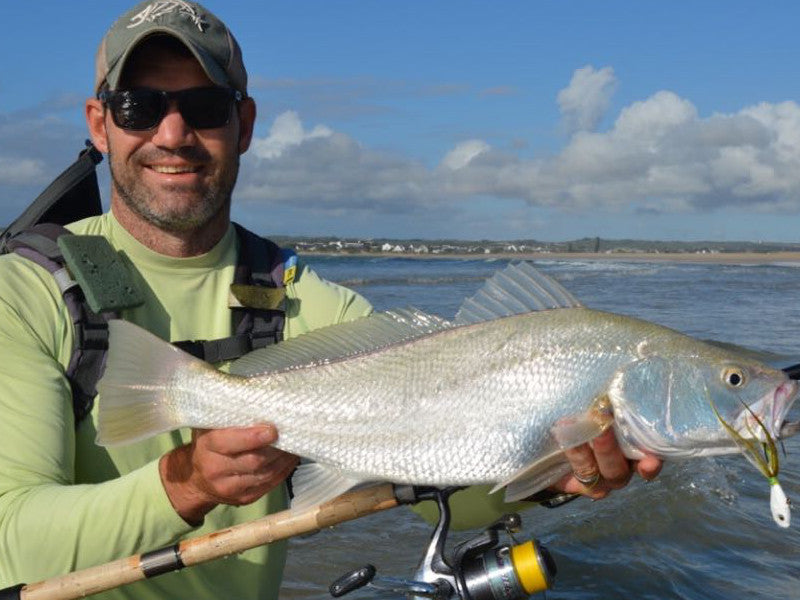
.jpg)
Minnows are taken mostly in autumn and crabs and frogs add a significant touch of local flavour. Snails and crustaceans such as daphnia also feature prominently on the menu. Rainbows in South Africa feed on essentially the same types of prey as elsewhere in the world: aquatic insects include mayflies, caddisflies, midges, dragonflies and damselflies, and terrestrial insects are represented largely by ants, beetles and grasshoppers. The critical thermal maximum (CTM) temperature they can tolerate is between 24° C and 26° C but scientists have found that this depends on the strain of the fish, its temperature history and its life stage - they have found rainbow trout that survived temperatures of almost 30° C. They prefer cool to cold oxygenated water, optimally between 13° C and 16° C. Rainbow trout are native to rivers in the Pacific Ocean drainage of North America. The understanding is that trout will not be permitted in waters outside the demarcated areas. Inasmuch as trout are alien species, conservation authorities, at the time of writing, are delineating the stream catchments within these zones which will be set aside for trout. The position of this contour in various regions in high summer more or less defines the lower limit of the zone in which trout can survive in streams or dams. In a general sense, this thermal barrier is altitude dependent and so it may be visualised as coinciding roughly with a specific contour above sea level.

As the water warms on its journey downstream it reaches a temperature above which the fish can no longer survive. Both species are cold-water salmonids and, as a result of the higher ambient temperatures in South Africa, they can only survive in montane regions. They can weigh as much as 180kg.Overview by Louis Wolhuter The Early HistoryĬolonists introduced rainbow trout and brown trout to South African waters towards the end of the nineteenth century, in keeping with the Victorian custom of transferring British species to the far-flung corners of the Empire. The best time of year to catch them is between October and June.

They are usually found between 25 and 40 miles from shore. You will need to charter a boat if you want to try catch yellowfin tuna. Fishing for them is not for the inexperienced, as the fish can grow longer than 4m, and can weigh well over 500kg. You have better chances of catching black marlin, rather than blue marlin, in South African waters. They are known for their size and for their speed, and they are definitely worthy of being classed as game fish. If you are travelling to South Africa between November and March, head to the east coast and enjoy truly challenging deep-sea fishing as you try to catch marlin. The best time to fish for longfin tuna by pole fishery is between October and March. What makes them an easier catch than yellowfin tuna is that they are not afraid to swim up toward the surface when you chum the water. They can reach up to 140cm in length, and they can weigh as much as 45kg. The fish is notorious for being bony, however, the unique, savoury flavour of the flesh means that the patience required for removing the bones it worth it.Īlso known as albacore, longfin tuna offers a challenge to anglers who try to reel them in along South Africa’s west and south coasts. Catching them can be as action-packed as the best NZ betting sites. It has razor-sharp teeth and can put up a fight while being reeled in. The popular fish is found all along South Africa’s west coast and along part of the south-east coast, as far as Port Elizabeth. They can grow up to 2m long and weigh up to 9kg. Known as the Barracoota in Australia and New Zealand, the Cape snoek or, simply, snoek, is a relative of the snake mackerel. However, it is not suitable for freezing. Shad can grow as large as 120cm and weigh as much as 14kg, and their flesh is known for its delectable flavour. The sardines are followed by shad and other predators. The best time to fish for shad is around the time of the sardine run, which sees massive shoals make their way down the coast from KwaZulu Natal to Cape Agulhas. Shad, also known as elf, are found along South Africa’s east and west coasts, and they don’t seem to mind whether they are in clear water or around rocks where the water churns and foams. That is where the best sport – and the best eating – is to be found. Mackerel and sardines are no strangers to the waters, but what most anglers want are the fish that follow in their wake. This creates a unique environment in which the country’s most sought-after fish offer exciting, challenging fishing. South Africa’s location sees its east coast washed by the warm currents of the Indian Ocean and its west coast by cold Atlantic Ocean currents.


 0 kommentar(er)
0 kommentar(er)
